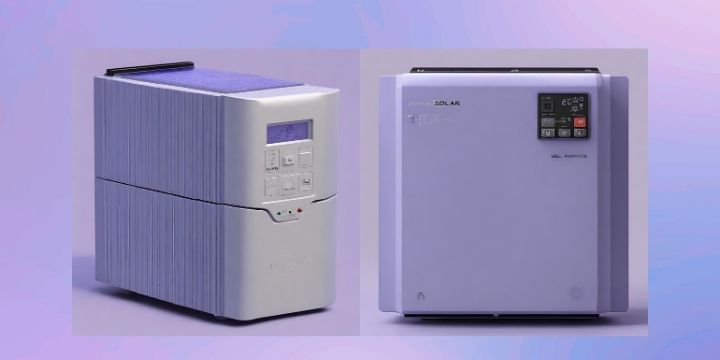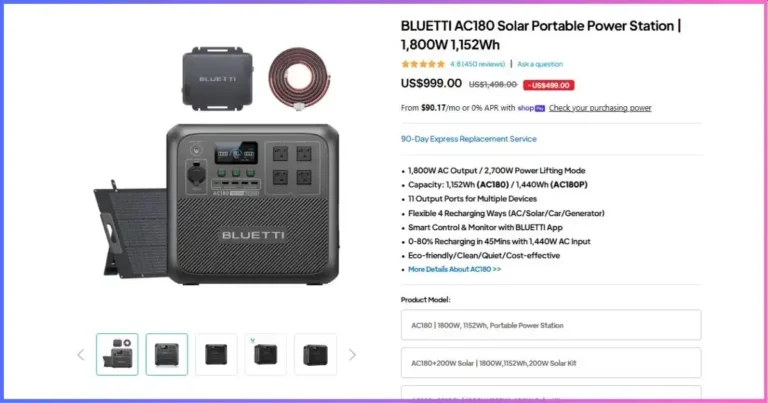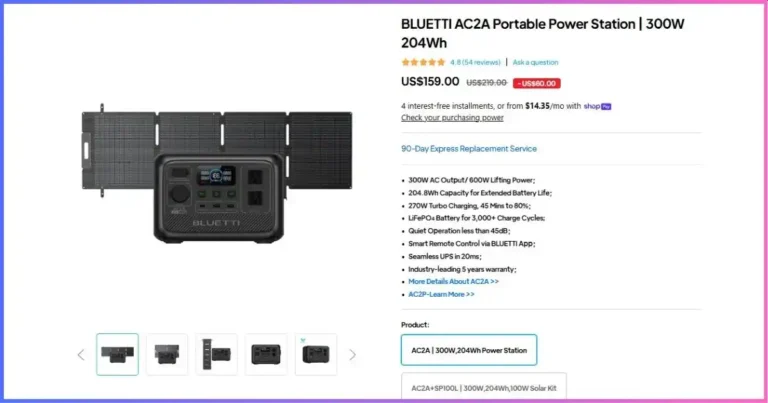What is a solar converter? A Key Component in Harnessing Solar Energy

Ever wondered how those shiny solar panels on rooftops actually work to produce energy? The key component in solar panels that converts sunlight into usable energy is called a solar converter, also known as a photovoltaic cell.
Related: The Dangers of Heat on Solar Inverters
These little cells contain special materials that absorb the energy from the sun’s rays and convert it into direct current (DC) electricity. The more light that hits the cells, the more electricity is produced. Pretty nifty, huh?
Reliable Power Anywhere
Experience the freedom of portable power with Bluetti's cutting-edge solar generators and power stations. Whether you're camping, preparing for emergencies, or reducing your reliance on the grid, Bluetti offers reliable, eco-friendly solutions that keep you powered up anywhere.
Explore Bluetti Products NowSolar converters are typically made of silicon, which is abundant, non-toxic, and highly efficient at converting light into energy. As the silicon absorbs the light, the energy from the light causes the electrons in the material to flow, creating electricity.
This conversion of light into electrical current is known as the photovoltaic effect. The photovoltaic effect was first observed in 1839 by a French physicist, but solar cells didn’t become commercially available until the 1950s. Since then, continuous improvements in efficiency and cost reductions have made solar energy more accessible and affordable for homes and businesses.
Related: How to Choose The Right Solar Inverter
Now you know the basics of how those shimmering solar panels work their energy magic thanks to the power of little solar converters.
Go Green with Bluetti
Take a step towards sustainability with Bluetti’s advanced solar technology. From high-capacity power banks to efficient solar panels, Bluetti helps you harness the power of the sun to reduce your carbon footprint without compromising on performance.
Shop Sustainable Power SolutionsWhat Is a Solar Converter?
A solar converter, also known as a solar inverter, is a device that converts the direct current (DC) electricity generated by solar panels into alternating current (AC) power that can be used in your home.
How Solar Converters Work
Solar panels produce DC power, but most household electronics run on AC power. So, a solar converter transforms the DC power into AC power using a component called an inverter.
The inverter takes the DC input and converts it into a sine wave AC output that matches the voltage and frequency of your local utility grid. This allows you to power your lights, electronics, and major appliances with solar energy.
Some solar converters also have additional features like maximum power point tracking, which helps optimize your solar panel output. They may also offer backup power options to provide emergency power in the event of a grid outage. The most common types of solar converters are:
- String inverters: Connect multiple solar panels and invert the combined DC output into AC power.
- Microinverters: Individual inverters are installed on each solar panel to convert the DC output to AC power, which is then combined with an AC trunk cable.
- DC optimizers: Work with a central inverter but have DC-to-DC converters that sit on each solar panel to maximize the power output of each panel before sending the energy to the inverter.
How Do Solar Converters Work?
Have you ever wondered how solar panels are able to power your home? The secret is in a device called a solar converter. Solar converters take the direct current (DC) electricity generated by solar panels and convert it into alternating current (AC) electricity that powers everything in your house.
How Do Solar Converters Work?
Solar converters change the variable DC from the solar panels into a constant AC output at 120V/240V. They do this using inverters, which take the DC input and invert it into AC. The inverters manipulate the voltage and frequency to match the AC of your local utility grid.
- First, the DC electricity from the solar panels flows into the inverter.
- The inverter then boosts the voltage to the proper level and converts it into AC.
- An output filter removes any remaining DC voltage or current, as well as harmonics on the AC waveform.
- The converted AC electricity then flows from the inverter to your home’s electrical panel to power your appliances and devices.
Solar converters allow you to use the free, abundant energy from the sun to reduce your dependence on the utility grid. By converting the DC from your solar system into AC, solar converters give you more choice and control over your home’s electricity source. With a properly sized solar system and high-efficiency inverter, you could potentially eliminate your electric bill altogether!
Not only do solar converters provide you with energy independence, but they also do so in an environmentally friendly way. By harnessing the power of the sun, you can generate clean, renewable electricity to power your life.
Power Your Adventures
Don't let power outages or off-grid adventures slow you down! Bluetti's portable solar-powered solutions are designed for convenience and efficiency, making them the perfect companion for any lifestyle.
Discover Bluetti's Portable PowerTypes of Solar Converters
There are three main types of solar inverters you should be familiar with:
String inverters
String inverters are the most popular solar inverters. They are connected to multiple solar panels to form a “string” that then feeds into a single inverter. String inverters are typically the most affordable option but if one solar panel in the string is not performing, it can impact the energy output of the entire system.
Microinverters
Microinverters are connected to individual solar panels, so each panel has its own inverter. This means that the underperformance of one panel won’t affect the others. Microinverters often cost a bit more upfront but can maximize energy production from your solar array. They are also typically more efficient in partial shade since each panel operates independently.
Power optimizers
Power optimizers are similar to microinverters in that they are connected to individual solar panels. However, power optimizers then feed into a single, central inverter. Power optimizers can help maximize energy output from each panel but are often a bit more expensive than string inverters. They also require a central inverter, adding to the overall cost.
In summary, the type of inverter you choose depends on factors like cost, efficiency, and how much partial shading your solar panels receive. String inverters are the most affordable, microinverters offer maximum efficiency, and power optimizers sit somewhere in the middle. Discussing the options with an experienced solar installer can help determine the best choice for your unique situation.
Conclusion
So there you have it, a quick overview of what a solar converter is and how it can help harness the power of the sun. The technology is constantly improving, getting more efficient and affordable each year.
While solar may not solve all our energy needs just yet, it’s an important piece of the renewable energy puzzle and a step towards a greener future. Maybe now is the time for you to look into adding some solar panels to your home.
Even if you just start small, every little bit of renewable energy helps. The sun is shining and the technology is ready, so take advantage of the power of solar and join the growing movement towards energy independence. The future is bright!
Disclosure: We may earn commission for purchases that are made by visitors on this site at no additional cost on your end. All information is for educational purposes and is not intended for financial advice. Read our affiliate disclosure.






